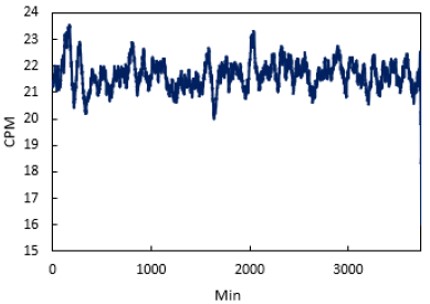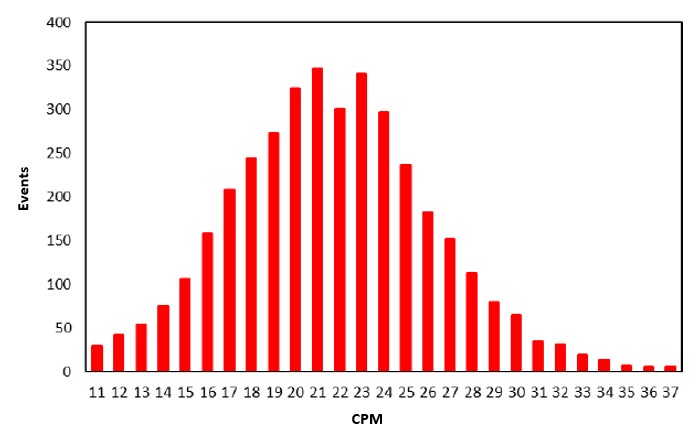| Difficult | Execution Time | Data Analysis | Radioactive Sources |
|---|---|---|---|
| Yes | No |
Hardware setup
This experiment guide is referred to the SP5660 Educational Kit.
Equipment: SP5660 – RockyRAD
| Model | SP5660 |
|---|---|
| Description | RockyRAD |
Purpose of the experiment
Study of relationship between uncertainty analysis and the duration of data acquisition.
Fundamentals

Experimental setup block diagram
The main contributors to the background energy spectrum are the gamma radiations that originate from naturally occurring radioactive isotopes dispersed in the environment and the materials that surround the detector, and the radiations whose origin can be traced to cosmic rays. To properly identify a sample from radioactivity point of view, the background must be acquainted. The background radioactivity measurement must be obtained without using any sample, specifically with the GM tube window free.
Carrying out the experiment
Place the GM detector on the desk if you are indoors or on an outdoor surface. Power ON the system. The GM detector immediately starts measurements and records data every minute of acquisition. The background counts must be acquired in the absence of samples, specifically with the GM tube window uncovered. The detected particles are counted and displayed on the monitor (CNTS), along with the average counts per minute (CPM) and dose (nSv/h). The system produces a sound for each detection. A significant statistical dataset is necessary for an accurate estimation of the environmental background. It is recommended to conduct an acquisition for at least 24 hours.
Results
The user can check for the presence of environmental radiation by observing non-zero counts on the GM counter. The statistical analysis of the distribution of this background plays a crucial role in accurately estimating the radioactive contribution of the samples under investigation.
An example of the typical measurement outcome is shown in the table and figures provided below. However, it is important to note that the measured background value strongly depends on the environment in which the detection is carried out.


| CPM Max | 37.0 |
| CPM Min | 11 |
| CPM Mean | 22.0 |
| σSTAT | 0.1 |
| STD | 4.5 |
| Live Time [m] | 3739 |


